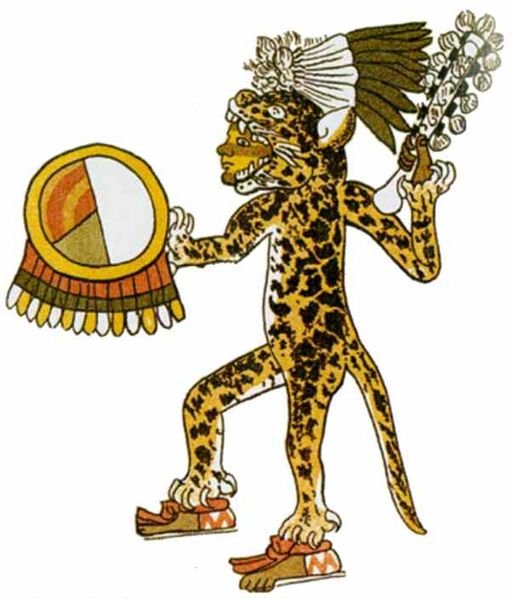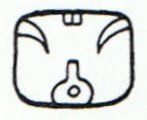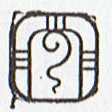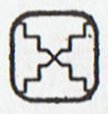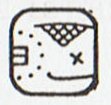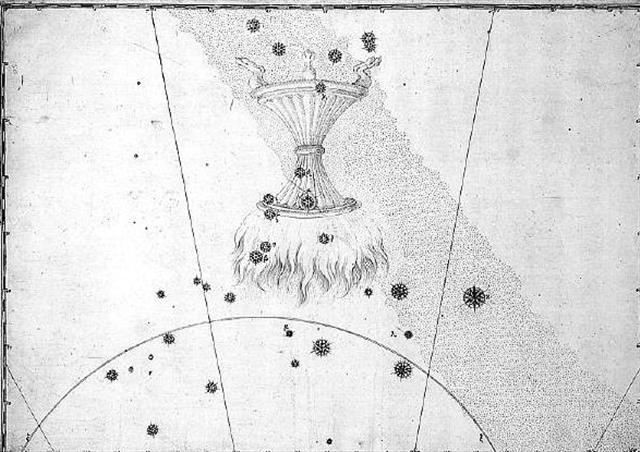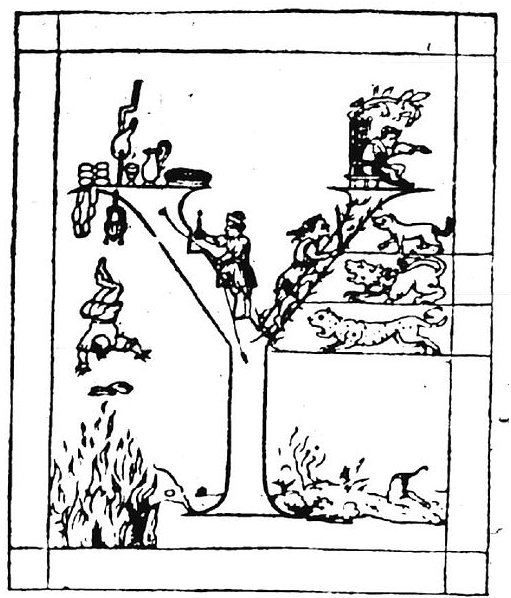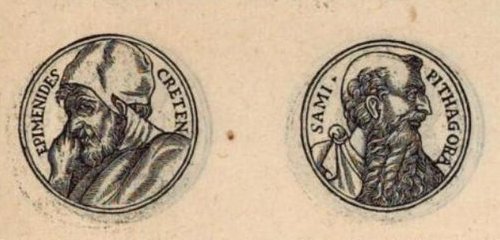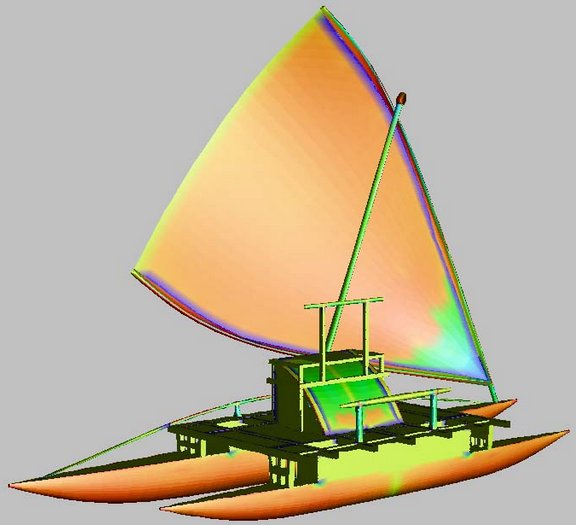The boat of Pure Ō left Easter Island in "November 5. ... i te porima o te raa.o ruti. i oho.ai te vaka.o Pure o ... Vaka. Canoe, small boat; vaka ama, outrigger canoe. Vaka-ivi, graves under ahu which hold skeletons (lit. 'bone canoe'). Vaka-ure, to lay foundation stones in the outline of a canoe (e.g. for hare paenga); nowadays used in the more general sense, without reference to a special shape of outline. Vanaga. Canoe, boat, bateau, shallop, barge. Vakapoepoe (vaka - poepoe) boat. P Pau.: vaka, canoe. Mgv.: vaka, canoe, raft. Mq.: vaka, canoe. Ta.: vaa, canoe, boat. Vakavaka, narrow. Mq.: vakavaka, vaávaá, small, fine, thin. Churchill. The fate of Oto Uta seems to have depended on the Winnowing Basket / Cradle close ahead. ... As has already been mentioned, the Delphians worshipped Dionysus once a year as the new-born child, Liknites, 'the Child in the Harvest Basket', which was a shovel-shaped basket of rush and osier used as a harvest basket, a cradle, a manger, and a winnowing-fan for tossing the grain up into the air against the wind, to separate it from the chaff. The worship of the Divine Child was established in Minoan Crete, its most famous early home in Europe. In 1903, on the site of the temple of Dictaean Zeues - the Zeus who was yearly born in Rhea's cave at Dicte near Cnossos, where Pythagoras spent 'thrice nine hallowed days' [27] of his initiation - was found a Greek hymn which seems to preserve the original Minoan formula in which the gypsum-powdered, sword-dancing Curetes, or tutors, saluted the Child at his birthday feast. In it he is hailed as 'the Cronian one' who comes yearly to Dicte mounted on a sow and escorted by a spirit-throng, and begged for peace and plenty as a reward for their joyful leaps ...
Here the Chinese had placed the spotted Leopard:
When people become old their complexion changes and spots will emerge on their faces (not soot as on the face of the Full Moon, nor roses as on the face of a little baby): ... And when the other was admitted to his presence: 'What is this, my flesh, that you would show me?' Tezcatlipoca answered, 'My Lord and Priest, look now at your flesh; know yourself; see yourself as you are seen by others!' And he presented the mirror. Whereupon, seeing his own face in that mirror, Quetzalcoatl immediately cried out, 'How is it possible that my subjects should look upon me without fright? Well might they flee from before me. For how can a man remain among them when he is filled as I am with foul sores, his old face wrinkled and of an aspect so loathsome? I shall be seen no more, I shall no longer terrify my people' ... The following change of rule meant the Sun quickly left in order to return fresh as a newborn half a year later. ... He sailed away on a raft of serpents, according to one version, but another has it that his remaining attendants built a funeral pyre, into which he threw himself, and while the body burned, his heart departed and after four days appeared as the rising planet Venus. All agree, however, that he will presently return. He will arrive with a fair-faced retinue from the east and resume sway over his people; for although Tezcatlipoca had conquered, those immutable laws that had determined the destruction of Tula assigned likewise its restoration ... ... All this, which in so many ways parallels the normal imagery of the Old World culture-hero myths, telling of the one who is gone, dwells underground in a happy, timeless land, as lord of the realm of the happy dead, like Osiris, but will rise again, we can read without surprise. But what is surprising indeed was the manner of Quetzalcoatl's actual return. The priests and astrologers did not know in what cycle he was to reappear; however, the name of the year within the cycle had been predicted, of old, by Quetzalcoatl himself. Its sign was 'One Reed' (Ce Acatl), which, in the Mexican calendar, is a year that occurs only once in every cycle of fifty-two. But the year when Cortes arrived, with his company of fair-faced companions and his standard, the cross, was precisely the year 'One Reed'. The myth of the dead and resurrected god had circumnavigated the globe ...
In ancient Egypt the region to the left of the Nile (as observed when looking down towards the north) was a graveyard. We will find the 3 great pyramids ('stones') on the western bank of the Nile at the Full Moon in the days leading up to Lucia:
Possibly the tao type of glyph illustrates one of the pair of quickly moving hulls of the Sun catamaran:
Tao. 1. To cook in an oven, to sacrifice. P Mgv., Mq., Ta.: tao, to cook in an oven. 2. To carry away. 3. Abscess, bubo, scrofula, boil, gangrene, ulcer, inflammation, sore. Mgv.: taotaovere, small red spots showing the approach of death. Mq.: toopuku, toopuu, boil, wart, tumor. Ta.: taapu, taapuu, scrofula on neck and chin. 4. Mgv.: a lance, spear. Ta.: tao, id. Sa.: tao, id. Ma.: tao, id. 5. Mgv.: taotaoama, a fish. Sa.: taotaoama, id. 6. Ta.: taoa, property, possessions. Ma.: taonga, property, treasure. Churchill. Sa.: tao, to bake; taofono, taona'i, to bake food the day before it is used; tau, the leaves used to cover an oven. To.: tao, to cook food in a oven, to bake. Fu.: taò, to put in an oven, to cook. Niuē: tao, to bake. Uvea: tao, to cook, to bake. Ma., Rapanui: tao, to bake or cook in a native oven, properly to steam, to boil with steam. Ta.: tao, the rocks and leaves with which a pig is covered when cooking; baked, boiled, cooked. Mq., Mgv., Mg., Tongareva: tao, to bake in an oven ... The word refers to the specific manner of cookery which involves the pit oven. The suggestion in the Maori, therefore, does not mean a different method; it is but an attempt more precisely to describe the kitchen method, a very tasty cookery, be it said. The suggestion of boiling is found only in Tahiti, yet in his dictionary Bishop Jaussen does not record it under the word bouillir; boiling was little known to the Polynesians before the European introduction of pottery and other fire-resisting utensils ... Churchill 2. Kao-kao, v. Haw., be red. Root and primary meaning obsolete in Haw. Sam., tao, to bake. Marqu., tao, bake, roast, sacrifice. Tah., tao, baked, boiled, cooked. Greek, καιω, Old Att. καω, to light, kindle, burn, scorch. According to Liddell and Scott, Pott refers καιω to Sanskrit çush, be dry, but Curtius rejects this. In Dravid. (Tamil) kay, to be hot, burn. Fornander.
"The letters of the Hawaiian alphabet were established in 1826 by a committee of missionaries who used letters to represent the sounds as they heard them. At this time, the change from t to k had begun on the island of Hawai'i but had not reached Kauai where t was used until comparatively recent times." (Buick)
"Catamaran, raft of float made up of logs tied together side by side ... - Tamil kattumaram 'tíed wood', f. kattu tie, bond + maram wood." (English Etymology )... On the fifteenth day of the month of October (tangaroa uri), Nonoma left the house [he ea mai roto i te hare] during the night [i te po] to urinate outdoors [ki kaho.mimi]. At this point Ira called out [he rangi] to Nonoma, 'Look at the canoe!' Nonoma ran [he tahuti], he quickly went to Te Hiringa Heru (a ravine in the side of the crater Rano Kau) and looked around. There he saw the double canoe way out near the (offshore) islets [i te motu o haho], and the two (hulls of the canoe) were lashed together ... [E:75]
|
||||||||||||||||||||||||||||||||||||||||||||||||||||||||||||||||||||||||||||||||||||||||||||||||||||||||||||||||||||||||||||||||||||||||||||||||||||||||||||||||||||||||||||||||||||||||||||||||||||||||||||||||||||||||||||||||||||||||||||||||||||||||||||||||||||||||||||||||||||||||||||||||||||||||||||||||||||||||||

